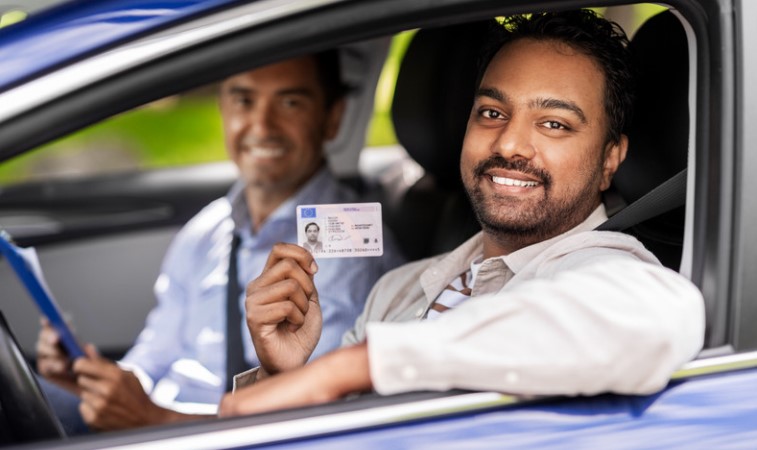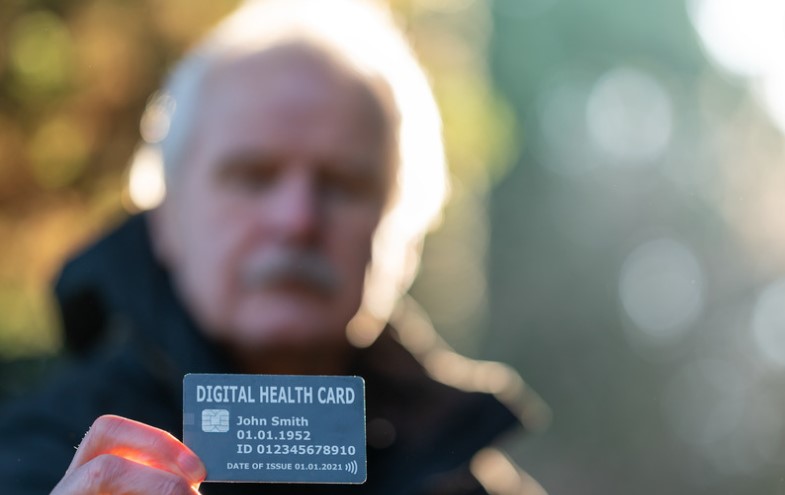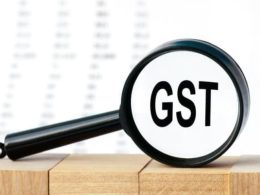Are you ready to hit the road in Alberta? Before you rev up that engine and go on a driving spree in one of Canada’s most scenic provinces, it’s essential to have a valid driver’s license. Whether you’re a new resident or looking to get your first-ever license, this guide will provide all the information you need on how to apply for an Alberta Drivers License. From eligibility requirements and types of licenses available to the step-by-step process of obtaining them, we’ve got you covered. So buckle up, and let’s dive into everything there is to know about getting behind the wheel legally in Alberta!
How to Apply for Alberta Drivers License?
You must meet certain eligibility criteria to apply for an Alberta driver’s license. Firstly, you must be at least 16 years old and have resided in the province for at least 12 months. You’ll need to provide official documents as proof of identity and residency, such as your passport or birth certificate.
Once you’ve met the eligibility criteria, it’s time to prepare for your knowledge test. This will assess your understanding of traffic laws and road signs in Alberta. Study materials are available online or can be picked up at any registry agent location. After passing the knowledge test, you’ll move on to a road test, where a licensed examiner will evaluate your driving skills. Make sure to practice driving beforehand with someone who has a full Class 5 driver’s license.
Once you pass both tests, congratulations! You’re now one step closer to getting your Alberta driver’s license! Head over to any registry agent office with all necessary documentation and fees ready to receive your newly issued license card.
Types of Driving Licenses
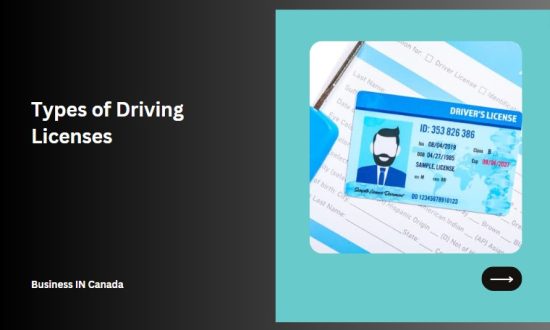
In Alberta, there are different types of driving licenses to cater to the varying needs of drivers. The type of license you need will depend on what kind of vehicle you plan on driving and your level of experience.
Learner License
To obtain an Alberta driver’s license, the first step is obtaining a learner’s license. A learner’s license allows you to learn how to drive under certain restrictions and conditions. To be eligible for a learner’s license in Alberta, you must be at least 14 years old and pass a vision test. If you’re under the age of 18, you’ll need parental consent to apply for your learner’s permit.
Once you have obtained your Learner License, there are some rules that come with it. You must always have a fully licensed driver who has been driving for at least three years in the front passenger seat beside you when driving on public roads. Moreover, unless supervised by an instructor or qualified accompanying driver over 18 years old, new drivers cannot operate between midnight and 5 am nor carry more passengers than there are seat belts while driving outside of Alberta’s graduated licensing system.
The next step after obtaining your Learner License is completing an approved driver’s education course before taking the road test for getting your Probationary Driver Licence (PDL). This means that any person wanting their full license will need to complete both classroom instruction as well as practical training behind the wheel before they can take their road test.
Getting a Learner License is essential if one wants to become familiar with Canadian traffic laws and gain experience behind the wheel before moving up through higher licensure levels like probationary licenses or full licenses.
Probationary License
A probationary license is the next step after obtaining a learner’s license. It allows you to drive alone but with some restrictions. This type of license aims to help new drivers gain more experience and develop safe driving habits. To qualify for a probationary license, you must hold a learner’s license for at least one year without any suspensions or disqualifications. You must also pass a road test and meet other eligibility requirements.
Once you have your probationary license, there are certain conditions that apply. For example, you cannot have any alcohol in your system while driving and must display appropriate signage on your vehicle indicating that you are still a novice driver. There are further restrictions, such as not being allowed to carry more passengers than seat belts available in the car or having zero tolerance when it comes to texting while driving.
It’s important to remember that these rules exist for your safety and those around you. With time and practice, you’ll be able to graduate from this level of licensing onto full unrestricted licensing, where all restrictions will be lifted!
Full License
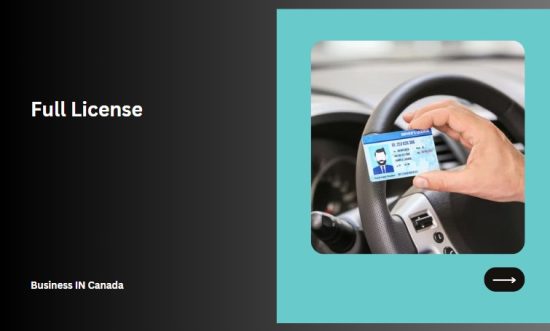
After successfully completing the probationary period, drivers in Alberta can apply for a full driver’s license. This license allows drivers to operate any type of vehicle within the class they are licensed for without restrictions. To obtain a full driver’s license in Alberta, applicants must have completed all probationary period requirements and be free from any traffic violations or suspensions during that time. They must also pass a knowledge test and a road test.
It is important to note that a full driver’s license is not just granted automatically after the probationary period ends. Drivers must take action and apply for it by visiting an Alberta Registries office. Once obtained, drivers should always adhere to safe driving practices and continue improving their road skills. Remember, being a responsible driver ensures your safety and helps keep our roads safer for everyone else too!
Motorcycle License
Obtaining a motorcycle license in Alberta is similar to getting any other type of driver’s license. However, there are some additional requirements that applicants need to meet in order to be eligible for a motorcycle license. Firstly, individuals must hold a valid Class 5 (non-GDL) or higher driver’s license before they can apply for a motorcycle license. This means that learners and probationary drivers are not eligible until they have fully graduated from the GDL program.
Secondly, riders need to complete an approved motorcycle training course before taking their road test. These courses teach essential skills like braking, turning and shifting gears on two wheels instead of four. Thirdly, riders will also need to pass both a written knowledge test and a road test specific to operating motorcycles. The road test will assess riding skills such as steering control, cornering ability and observation techniques.
Once you’ve passed your tests and met all eligibility requirements, you’ll receive your Class 6 (motorcycle) operator’s licence!
Commercial License
A commercial License is a type of driver’s license that allows you to operate commercial vehicles for business purposes. There are three classes of Commercial Licenses in Alberta – Classes 2, 3 and 4.
Commercial License – Class 2
A Commercial License – Class 2 is required for drivers who want to operate a bus or any vehicle designed to transport more than 24 passengers. This license also covers vehicles that carry hazardous materials. To be eligible for a Commercial License – Class 2, you must have held a valid non-graduated Alberta driver’s license for at least two years before applying. You must also pass a medical exam and obtain a commercial learner’s license.
The next step is to complete the necessary training and education specific to driving commercial vehicles. This includes studying the Alberta Driver’s Guide for Commercial Vehicles, taking courses on air brakes, and completing practical training with an approved instructor.
Once you’ve completed your training, you’ll need to pass both written and road tests administered by Alberta Transportation. The written test covers topics such as safe driving practices, vehicle inspection procedures, and transportation regulations. The road test assesses your ability to operate a commercial vehicle in various traffic situations safely.
Obtaining a Commercial License – Class 2 requires dedication and commitment but opens up opportunities in the transportation industry that can provide long-term career stability.
Commercial License – Class 3
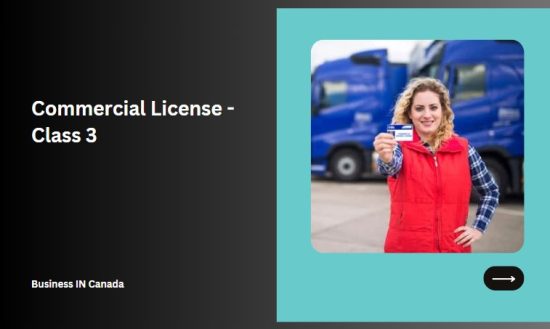
A Commercial License – Class 3 is required for operating single vehicles with more than three axles, such as large trucks and buses. This license also covers tow cars that have a total weight of up to 4,600 kg. To be eligible for the Class 3 license in Alberta, you must already hold a full non-probationary Class 5 driver’s license and pass a knowledge test specific to commercial driving.
Driver training is not mandatory but highly recommended before attempting the road test. You will need to demonstrate your ability to operate the vehicle safely during the on-road exam, which includes pre-trip inspections, basic maneuvers like backing up or turning around corners with limited space, and highway driving.
Additional endorsements can be added to this license depending on the cargo you plan to transport. For example, if you want to haul dangerous goods or hazardous materials (Class 1), you will need an endorsement added to your Class 3 license. Obtaining a Commercial License – Class 3 requires dedication and practice behind the wheel. It opens up new job opportunities in various industries, including transportation and logistics.
Commercial License – Class 4
Commercial License – Class 4 is required if you want to drive a taxi, ambulance or any other vehicle that carries passengers for hire. This license allows you to operate a bus with a maximum capacity of 25 passengers.
To be eligible for this license, applicants must have at least two years of driving experience and hold a valid non-probationary driver’s license. They must also pass the knowledge test and road test specific to Class 4 vehicles. In addition to meeting the eligibility requirements, applicants must provide medical documentation indicating they can drive. This includes an eye exam and completing an Alberta Transportation Medical Examination form signed by a Canadian doctor.
Once all requirements are met, applicants can apply for the Commercial License – Class 4 at any Alberta registry agent office. The fee for this license varies depending on the location but typically ranges from $75-$100.
Obtaining a Commercial License – Class 4 requires meeting specific criteria, including experience, passing tests and medical exams. Drivers operating commercial vehicles carrying passengers must be properly licensed in order to ensure safety and compliance with regulations.
Steps to Get Alberta Drivers License
You must follow several steps to obtain an Alberta driver’s license. The process involves meeting eligibility requirements, obtaining a learner’s permit, completing driver education and training courses, passing a road test and finally getting your full license.
Eligibility Requirements
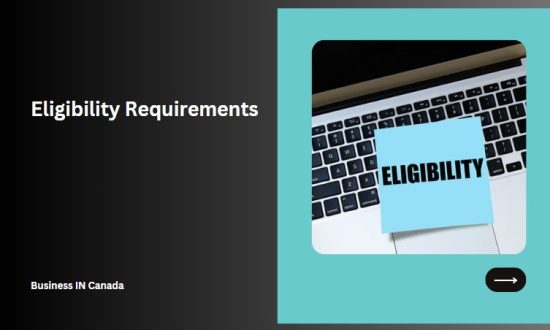
Before you apply for an Alberta driver’s license, there are certain eligibility requirements that you must meet. These requirements differ depending on the type of license you are applying for.
To be eligible to obtain a learner’s license in Alberta, you must be at least 14 years old and have written consent from your parent or guardian if under the age of 18. You must also pass vision and knowledge tests on traffic rules and regulations.
For a probationary driver’s licence, applicants must hold a valid learner’s licence for at least one year without any suspensions before they can take their road test. To get your full driver’s licence in Alberta, you need to be at least 16 years old and have held a class 7 (learner) licence for at least one year without suspension or cancellation history.
Suppose you’re applying for a commercial driver’s license in Alberta. In that case, the eligibility requirements include being at least 18 years old with no outstanding fines or fees owed to the government related to driving offences. Additionally, applicants will need to provide proof of medical fitness as well as complete specific training programs based on the type of commercial vehicle they plan to operate.
It is important that all eligibility requirements are met before proceeding with obtaining an Alberta driver’s license, as failure to do so may result in delays or even disqualification from getting licensed altogether.
Apply for Learner License
To apply for a Learner License in Alberta, you must be at least 14 years old. First, you will need to visit an Alberta Registry Agent and provide them with the necessary identification documents. These include proof of your legal name, date of birth, and residency status.
Once your identity has been confirmed, you will then need to take a vision test to ensure that you meet the minimum visual acuity requirements for driving in Alberta. After passing the vision test, you will be required to pass a knowledge exam that tests your understanding of traffic laws and road signs.
After completing these steps, you will receive your Learner’s License, valid for up to two years. During this time period, new drivers are expected to complete driver education courses and accumulate practice hours behind the wheel before they can take their road test and obtain their full license.
It is important to note that while holding a learner’s license in Alberta, there are certain restrictions on when new drivers can drive and who can accompany them as passengers.
Driver’s Education and Training
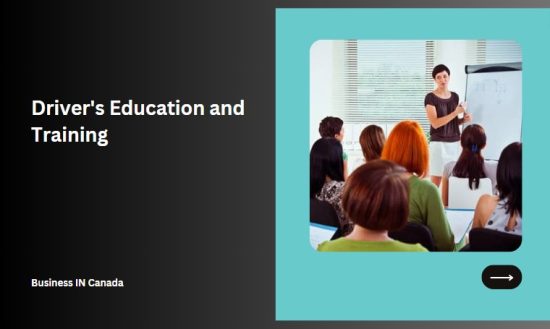
Driver’s Education and Training are an essential part of the process of obtaining your Alberta driver’s License. It can also help you become a better driver by teaching you important skills and behaviours to keep you safe.
To begin, it is recommended to take a government-approved driver education course. These courses are designed to teach new drivers about traffic laws, signs, signals, and proper driving techniques. The course may include classroom instruction as well as practical experience behind the wheel.
It is also highly recommended to practice driving with someone who has more experience than you do. This person can give you tips on how to handle different situations while driving and offer feedback on areas where improvement may be needed.
Another option for training is defensive driving courses which focus on accident prevention tactics for experienced drivers. These courses teach advanced techniques such as emergency braking, skid control, hazard perception and critical decision-making skills. Investing in Driver’s Education and Training can help prepare new drivers for their future on the road while providing valuable tools even for experienced individuals looking to improve their driving abilities.
Road Test
The road test is the final step in getting your Alberta driver’s license. It’s a practical assessment where you’ll demonstrate your driving skills and knowledge of traffic rules. Before taking the road test, make sure you have enough practice behind the wheel.
During the road test, an examiner will accompany you in a vehicle and observe how well you handle different driving situations such as turning, stopping, changing lanes, merging with traffic etc. You’ll also be tested on parallel parking and backing up.
To pass the road test, you must show that you can drive safely and confidently without making any critical errors. Critical errors include actions that could cause accidents or endanger other drivers or pedestrians. If you fail the road test, don’t worry. You can take it again after waiting for some time to practice more behind the wheel. Just keep practicing until you feel confident enough to pass.
Remember that passing your road test is just one step towards becoming a responsible and safe driver on Alberta roads. Keep learning about new traffic laws and ways to improve your driving skills even after obtaining your full license.
Get Full License
After holding a probationary license for two years without any suspensions or violations, you are eligible to apply for the full Class 5 driver’s license. This is an important milestone in your driving journey as it allows you to drive on all roads and highways in Alberta without any restrictions.
To get your full driver’s license, you will need to take another road test with a qualified examiner. The road test will assess your ability to handle various traffic scenarios, such as merging onto highways, changing lanes safely, and making proper turns at intersections.
You should also ensure that all fines and outstanding payments related to your previous licenses have been cleared before taking the road test. Failure to do so can result in delays or even disqualification from getting a full driver’s license.
Additionally, be sure to practice safe driving habits well before taking the road test. Remember that being a responsible driver help you pass the exam and ensures safety on the roads for yourself and others around you. Getting your full Class 5 driver’s license is an exciting achievement that requires patience, dedication, and commitment to improving your driving skills.
Conclusion
As we have learned, obtaining an Alberta driver’s license involves several steps and requirements, depending on the type of license you need. Knowing which license is right for you and the eligibility requirements is important before beginning the application process.
Whether you are a new resident or a first-time driver, taking advantage of any available education and training programs is crucial to ensure that you are prepared for the road test. This will improve your driving skills and increase your chances of passing on the first attempt.
FAQ – How to Apply for Alberta Drivers License?
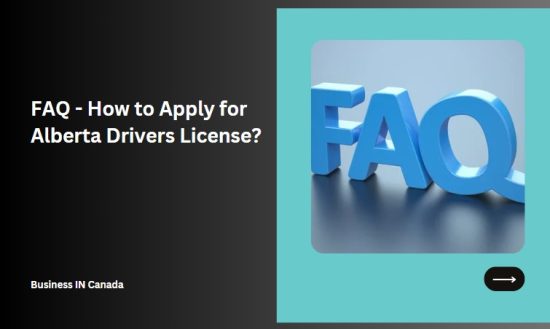
How long do I have to change my license after moving to Alberta?
If you’ve recently moved to Alberta, it’s important to know how long you have before you need to change your driver’s license. According to the province’s rules, if you’re moving from another Canadian province or territory, you have 90 days after establishing residency in Alberta to obtain an Alberta driver’s license.
What do I need to get a new driver’s license in Alberta?
To obtain a new driver’s license in Alberta, there are specific requirements that an individual needs to meet. Firstly, you must be at least 16 years old and have adequate identification documents such as a passport or birth certificate. Secondly, one has to pass the vision test and written knowledge test.
Before taking the road test for your full license in Alberta, completing a driver’s education course from an approved institution is mandatory. The program covers various aspects of driving, such as traffic laws and regulations, defensive driving tips and manoeuvres.
After completing the educational program successfully, learners can apply for their probationary license, which allows them to practice on-road under supervision before appearing for their final road test. During this process, it is also essential to maintain a clean record by following all traffic rules diligently because any violation may result in disqualification from getting a valid license.
Obtaining an Alberta driver’s license requires fulfilling certain eligibility criteria followed by passing multiple tests, including written knowledge and on-road assessments. The journey may seem long, but anyone can achieve this milestone with patience and practice!
How long does it take to get Alberta drivers license?
Getting an Alberta driver’s license can take anywhere from a few weeks to several months, depending on various factors. The process involves completing different stages and requirements before obtaining the full license.
Firstly, you need to meet the eligibility requirements for the type of license you are applying for. For example, if you’re applying for a learner’s permit, you must be at least 14 years old and pass a vision test. After that, you will have to apply for your learner’s permit, which requires taking a written knowledge test as well as passing a vision exam. Once passed, you’ll receive your Class 7 Learner License.
Next comes driver education and training; this is mandatory in Alberta before attempting the road test. You can enroll in an accredited driving school or self-study with approved materials. Once ready, schedule and pass your road test – typically done within six months after getting your learner’s permit – then move up to probationary status by successfully completing another on-road assessment known as advanced road testing (ART).
Once all these steps are completed successfully – including sufficient supervised driving hours – get your full license!
How long can I drive in Alberta with Ontario plates?
If you’ve moved to Alberta from Ontario, you may be wondering how long you can continue driving with your Ontario license plates. The good news is that you’re allowed to drive in Alberta for up to 90 days with valid Ontario plates and registration.
After the 90-day period has passed, however, you’ll need to register your vehicle in Alberta and get new license plates. This process involves obtaining an Alberta driver’s license first and then registering your vehicle at a registry agent.
You could face fines or other penalties if you’re caught driving with expired or invalid registration while still using Ontario plates after the 90-day grace period. So if it’s been more than three months since moving to Alberta, make sure to take steps toward getting an Alberta driver’s license and registering your vehicle as soon as possible.
How long is an Alberta road test?
Road test typically takes around 25-45 minutes depending on traffic conditions and other factors. The actual time may vary depending on how many other candidates are waiting in line ahead of you. We hope this article has provided helpful information about how to apply for an Alberta driver’s license that will make your journey toward getting behind the wheel easier!




